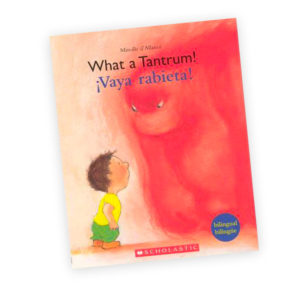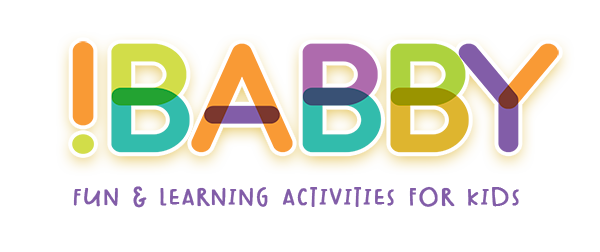My daughter is a child prone to anger. I can’t tell you how prone to anger she is (what is the “right” amount of anger for a three year-old, anyway?), but she is. She’s not very patient (and I’m not either) so she makes a fuss about everything, even things that in the eyes of an adult are basically nothing. The doll who does not fit into her pram. The cap of the pen which rolled under the couch. The sock which doesn’t fit well, the milk that’s too hot, the wrong glass on the table. She cries out, slapping herself and scratching her face. She seems completely incapable of managing her anger so it is like she’s jamming in a short emotional circuit, which makes her aggressive toward herself and others. Some time ago I posted my concerns about my daughter’s anger in an attachment parenting group and many moms suggested excitedly to buy Noemi the book “What a tantrum!” So I bought it. But – I know I’m a lone voice – I just can’t get myself to like this book.
What a tantrum! by Mireille D’Allancé, considerations about the book

Little Roberto comes home angry and once he sits down at the table, he does not want to eat the spinach his dad prepared for him.
The father, in response, casts out his son, sending him to his room “until he has calmed down.”
And here I begin to turn up my nose. Robertino has been irritating, but does he really deserve to be sent away by his father, without even trying a different and more empathetic approach?
How comes his dad doesn’t even ask his son, who’s visibly nervous, why is he so angry?
Personally, if my daughter came back from school being furious I would ask her what happened, why she is so angry, I would also feel the need to excludes anything “serious” happened, something which may require my intervention.
I’d try to take the this opportunity to tell her she can count on me, if she ever needed an emotional punching-ball or to talk a little.
Punish my daughter because she’s angry an d shoo her away doesn’t sound like a good approach. What would this teach to her? That I love her and I like her presence only if she’s nice and in a good mood? That her anger is so troublesome to me that I need to ask her to hide it and confine her to her room?
We flip page. Roberto’s anger gets so violent that it materializes into a huge, red and grim- looking monster. The child is so overwhelmed that he remains helpless while the monster create a chaos in his room, overturning furniture and throwing and breaking toys. What’s the meaning of this metaphore? That anger can overwhelm the rationality of the child becoming destructive. The child is not responsible for what happens, he is not the one who destroys but to do so is a separate entity, large and menacing.
But, at it was pointed out in many forums I looked up for reviews, many children are too young to interpret abstract figures correctly and so this “monster” conveys a great uneasiness to them and to my daughter as well.
So much to think: “better not to get angry or that red monster will show up, it makes me so scared … and then breaks all my things.”
Some children feared that even screaming too loud could get out that “thing” out of their mouths, as shown in the book.
At the end of the book Roberto calms down and start calling the anger monster “bad”, “ugly” and “stupid.
The ending is not very clear and you go from anger that is closed in the box to Roberto asking his father if there’s some dessert left, with nothing to explain to the reader that anger, once locked in the box, subsides and that Roberto goes back to being a quiet child. In short, anger is an emotion to hide and punish (“go to your room, I do not want to see that, come back when you’re calm!”) and to be repressed to avoid dangerous consequences, because if you lose control, if you don’t keep the “bad, ugly and stupid monster” locked in a box (like the famous Pandora’s Box) dad gets angry and who knows what could happen.
Of course, this is just my personal review. In our home we gave this book a “D”: the intention was good but the concept and the characters should be reviewed.
What do you think?


Hi, this is a comment.
To get started with moderating, editing, and deleting comments, please visit the Comments screen in the dashboard.
Commenter avatars come from Gravatar.